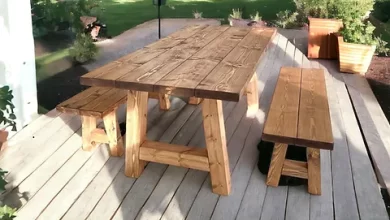Top Benefits and Challenges of Modular Construction

Modular construction refers to a group of houses that are pre-built in a factory. Modules get constructed in factories in rows. Many people love modular homes because they provide them with many advantages. However, just like anything in life, it also comes with some challenges. Curt Ranta has explained both of them below.
Benefits of Modular Construction
Let’s start with the advantages and benefits of modular construction.
1. Low Construction Cost
You can save money in two ways with modular construction. For starters, you can build your units for a fraction of the cost of buying ready-made ones. Next, you can save money by using fewer resources than, starting from scratch. If you have ever built anything before, then you know that it takes a lot of work and patience to get something right. You need to make sure everything is square and level, and you want to make sure that you do not waste any material. With modular, you can buy the parts you need, put them together, and go!
2. No Construction Delay
By building the modules inside a confined enclosure, construction delays caused by adverse weather can be avoided. It also gives workers safer and more comfortable working circumstances, allowing them to be more productive and produce higher-quality goods. Modulars, according to Curt Ranta, make installation easier, they have pre-drilled holes, making component installation easier and allowing for time and energy savings.
3. Time Efficient
If you have ever tried to build something from scratch, you know how frustrating it can be. Something always goes wrong, whether it is a measurement error or a loose screw. But, when you construct modularly, all you have to do is put the pieces together, arrange them where you want them, and link them. It implies that you will spend less time on the assignment.
4. Less Wastage
Modular construction technology is getting used for many years. It provides for easy component installation and removal without causing damage. Since the environment is closed, there is very less wastage.
Challenges In Modular Construction
Modular architecture appears to be both innovative and advantageous. But, as with other construction systems, certain actual obstacles can hinder your modular project, according to Mr. Ranta.
1. Less Variety
Modular construction is more consistent and repeatable. Because they are created in such a way that all units may be stacked together, they have a similar appearance. Making modules different from each other defeats the time and cost advantages that the module construction provides in the first place.
2. Getting Approval Can Be Difficult
Obtaining approval for modular construction can be challenging because it varies by state or country. If you live in a place that permits closed construction, getting approval is simple. After an inspection of the plant or compound, you may be permitted to work in your restricted area. But, if you live in a state that does not allow closed construction, you will be unable to finish your project.
3. Transportation Risk
Modular buildings are typically delivered by truck. . When transporting these structures, many things need consideration. First, make sure the material will fit through the door. If not, cut it up into smaller chunks. Next, make sure the material does not shift inside the truck. Last, check that the structure does not become caught in the trailer or truck bed. Driver and fixers must be very cautious with each module because a single mishap during shipment could result in expensive repairs or replacements. It might potentially halt a whole installation sequence.
Conclusion
Modular buildings have many advantages over traditional building systems, including lower prices and shorter construction periods. Builders can create custom constructions to meet vital requirements. Module constructions are an excellent solution if you do not have much money or are on a tight timetable. Please, leave any questions or comments in the section below.








